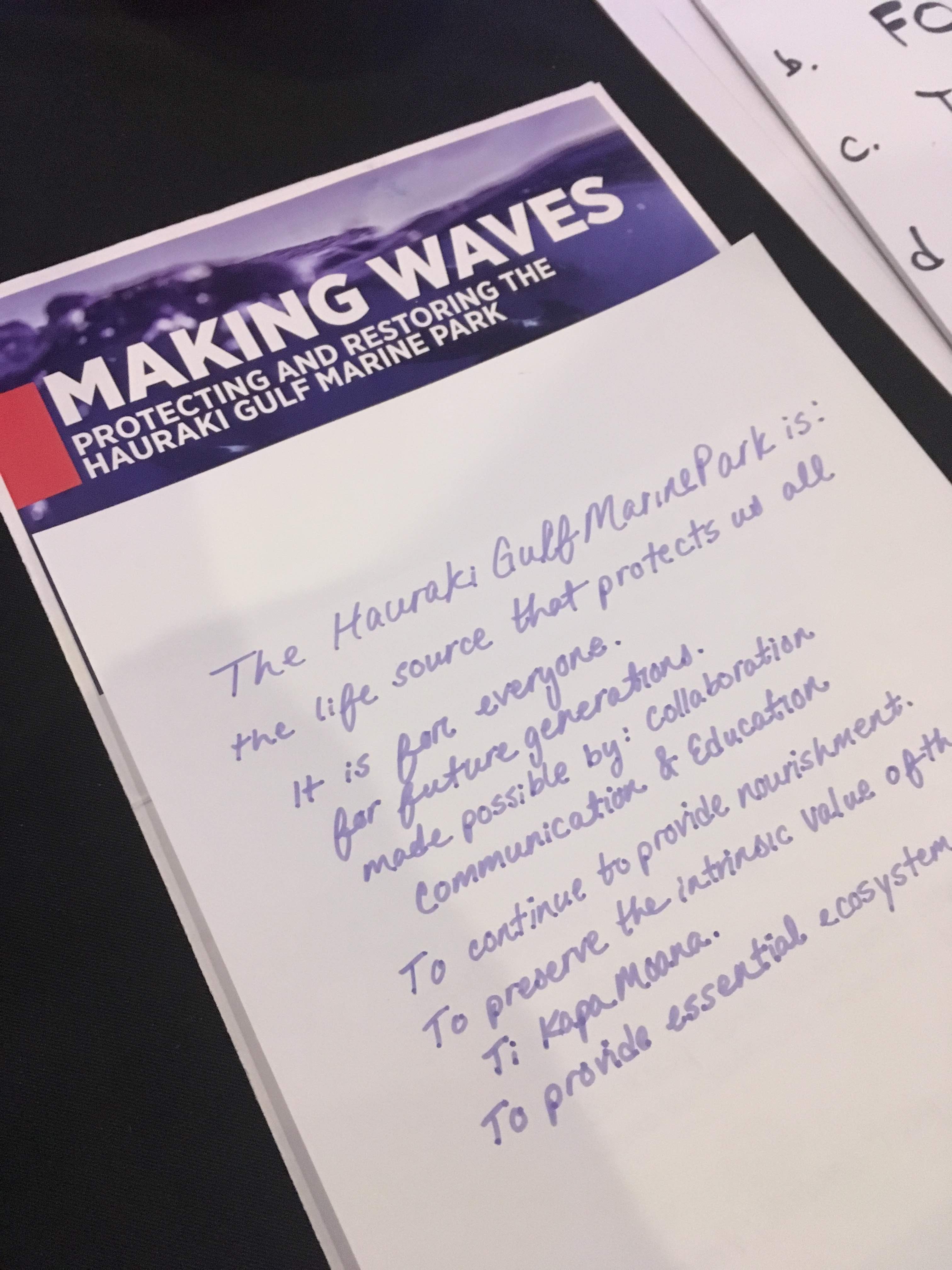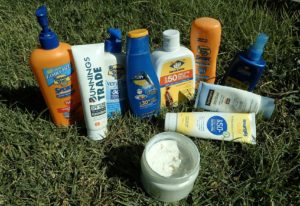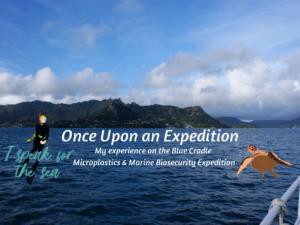Only 4% by weight of the planet’s mammals are wild. Ourselves, livestock and the pets we raise make up the other 96%.
There’s a fact which highlights that we currently live in a world which is so out of balance with nature. I for one was shocked by this fact presented by Tom Trnski at the Hauraki Gulf Forum’s ‘Making Waves: Protecting and Restoring the Hauraki Gulf Marine Park’ when addressing the State of the Gulf.
Large expanses of of shellfish-beds and reefs all over the world have been transformed into featureless muddy seafloor and barren rocks which provide little benefit to the fish and other marine life. Those historic habitats which offer food and shelter to sea life have been pillaged and now smothered by sediment and nutrient run-off from land.
Its something we cannot ignore which is happening to coastal ecosystems wherever there is human influence. Its something I have witnessed firsthand when snorkeling and diving in the Hauraki Gulf.
The conference I attended earlier this week brought together people which represented various places in the Hauraki Gulf, across all different sectors. Government agencies, Non-profit organizations, scientists, entrepreneurs, fishermen, and more! The thing we all have in common is: we love the Hauraki Gulf and want to play a role in protecting it.
We heard about the two long-term goals for the 12,000-square-kilometre Hauraki Gulf Marine Park and discussed actions to be taken to achieve these goals 1.) to ensure that at least 20 % of the waters be protected and 2.) that restoration efforts establish 1000 km2 of shellfish-beds and reefs.
There was this awareness within the group present that action is required if we are to stop the decline and reverse the damage already done to our marine ecosystem. Its been proven that marine ecosystems are remarkably resilient when given a chance to recover, so by establishing more protected areas there is hope that regeneration can begin.
There is actually several different types of marine protection. But the best kind (in my opinion) is the Marine Reserve; an area set out to be a ‘no-take’ zone. I’ve actually spent a lot of time within Marine Reserves in New Zealand, starting at Leigh Marine Lab at Cape Rodney- Okakari, NZ’s first MR established in 1975 then less than a year later I began working at Sir Peter Blake Marine Education and Recreation Centre (MERC), within the Long Bay- Okura MR. They have a great deal of benefit to the overall Marine Protected Area (MPA) network and we need more of them! Currently only 0.3% of the Hauraki Gulf is protected.
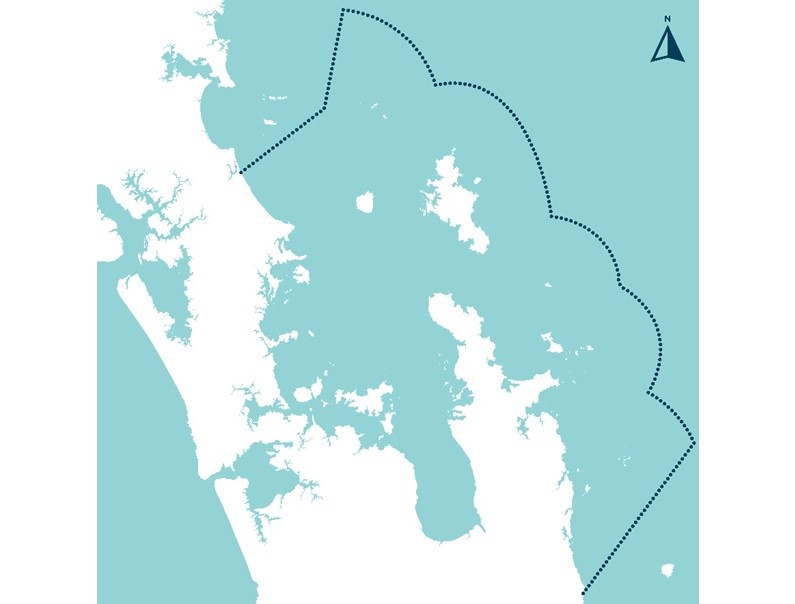
How cool is it that egg production is 18x higher within reserves! Nick Shears reported on findings from the past 44 years since New Zealand’s first Marine Reserve. He presented data which supports that Marine Reserves play a crucial role in allowing larger (more reproductive) organisms to reproduce; an amazing result of this is the spillover effect to surrounding coastal areas, which means higher rates of larvae dispersal.
Marine Reserves are agreed to be a valuable asset but it seems like no one wants to give up their favorite fishing spot. However, its more important to think of the bigger picture. What kind of legacy are we leaving if we don’t think about how our actions will not only leave a negative impact on our oceans but for future generations.
Based on some research done at Cape Rodney-Okakari (Goat Island) Marine Reserve which included genetic data collected from juveniles inside the reserve later used to determine the genetic origin of snapper caught outside the reserve. They found that 11% of the new snapper came from within the Marine Reserve. However, most Marine Reserves weren’t designed big enough but even these small MRs will protect a disproportionate amount of marine life compared to areas with no protection.
In the afternoon we heard from the youth panel; I was inspired by a student from Waiheke High School, then a dynamic duo from Para Kore (Zero Waste) and four students from Long Bay Primary that were part of bringing the youth of the community together and getting enough signatures on their petition to present it to parliament! These courageous kids did their research, voiced their concerns and want to expand the Long Bay- Okura Marine reserve to include Winstone’s Cove and Waiake Beach.
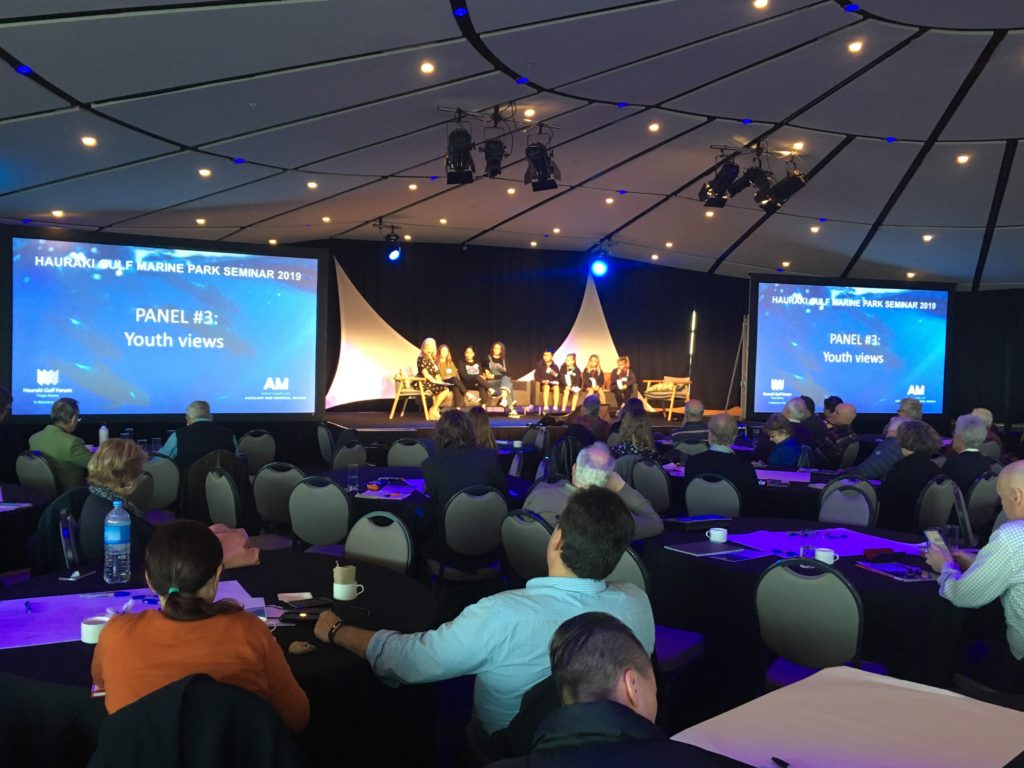
The day was a great opportunity for networking and meeting new people, the resounding theme of the day was music to my ears; people paying attention to the crisis on hand and recognizing that we all play a part in it. At the conclusion of the days events the organizers encouraged us to take action and commit to the action plan by writing our three goals down on paper. So the key things I am going to do to support/help this new vision of protection and restoration of the gulf succeed is:
1.) Continue to educate and communicate the importance of looking after out ocean.
2.) Bring people together and pursue conversations to drive an inspire future change.
3.) Get involved in pest control trapping non native land species like rats, stoats and possums.
Something else I heard today; you can’t force change, but you can inspire it. I want to inspire change.

Why do we need to take action?
“Because it’s impotant.” – Dr. Roger Grace
